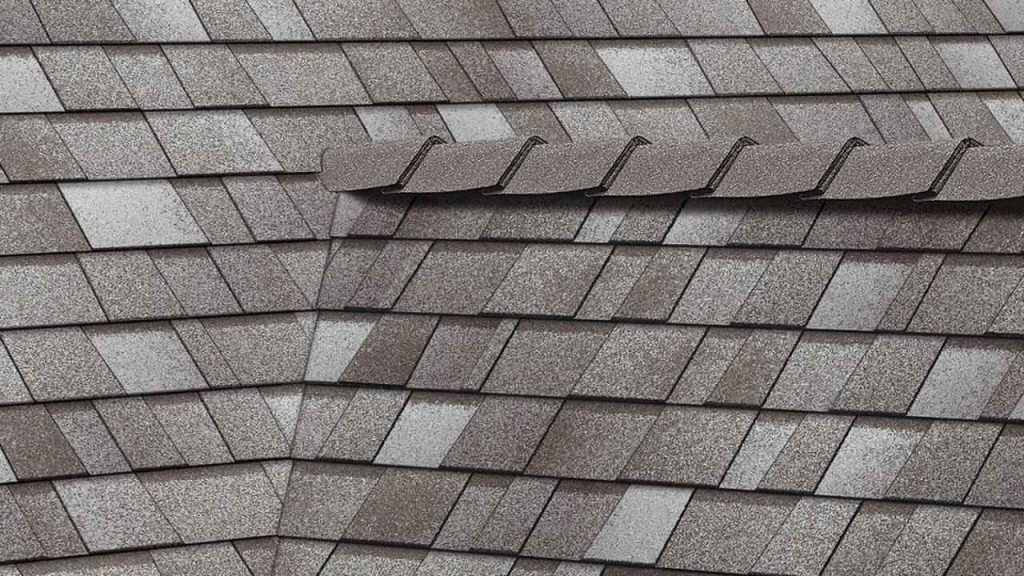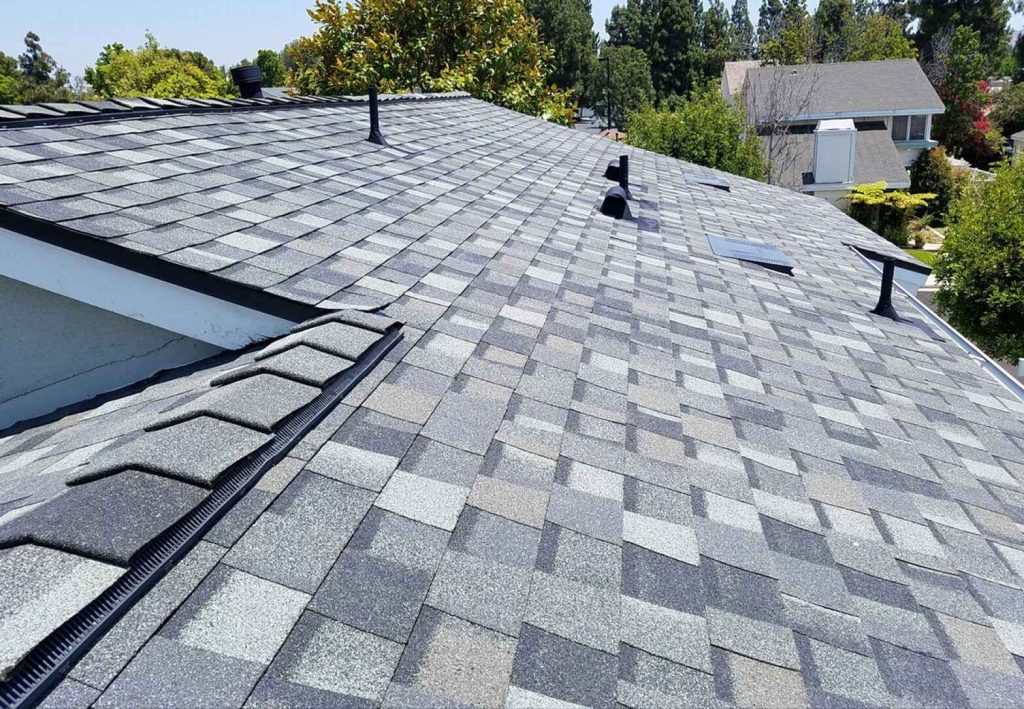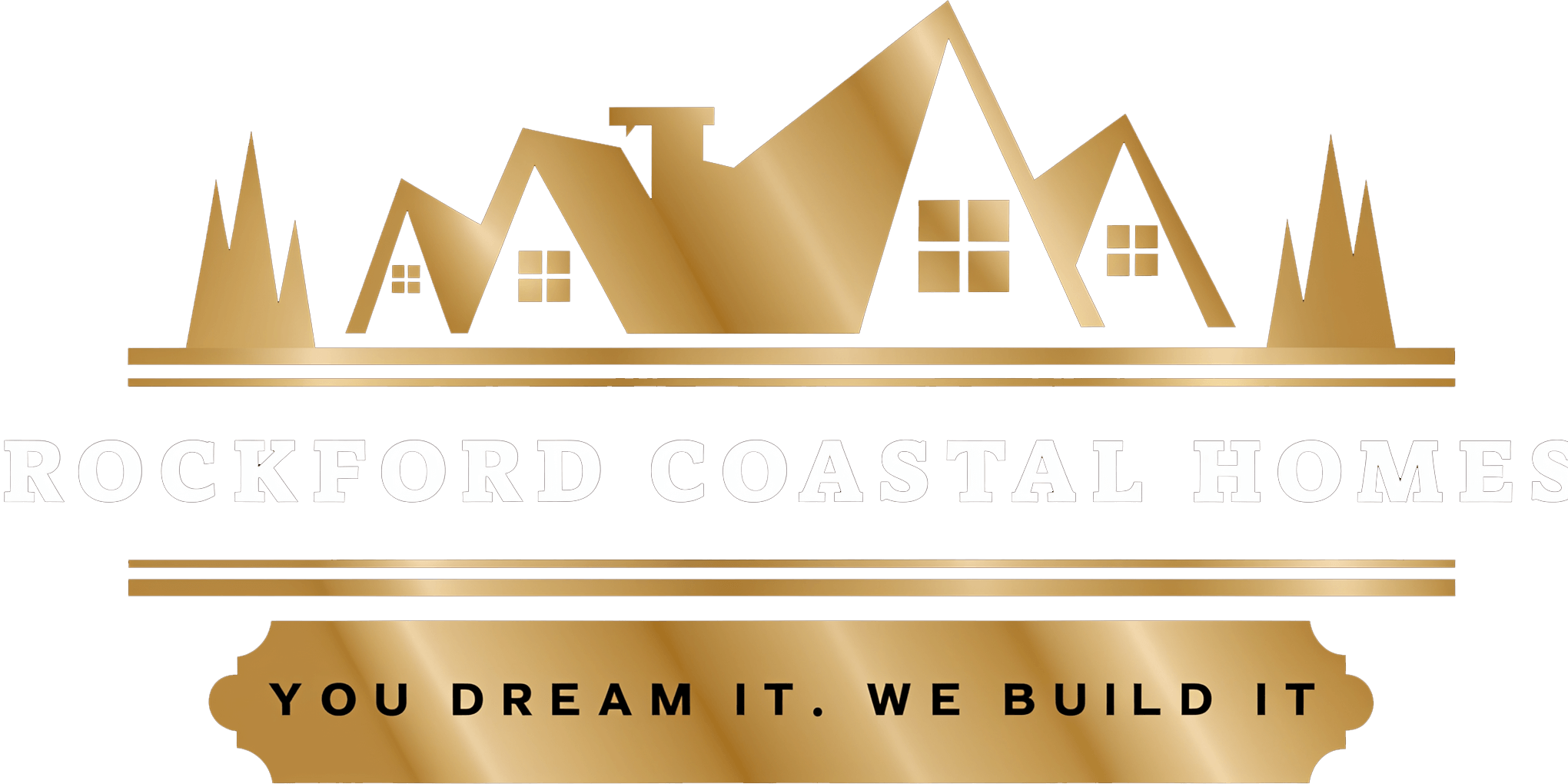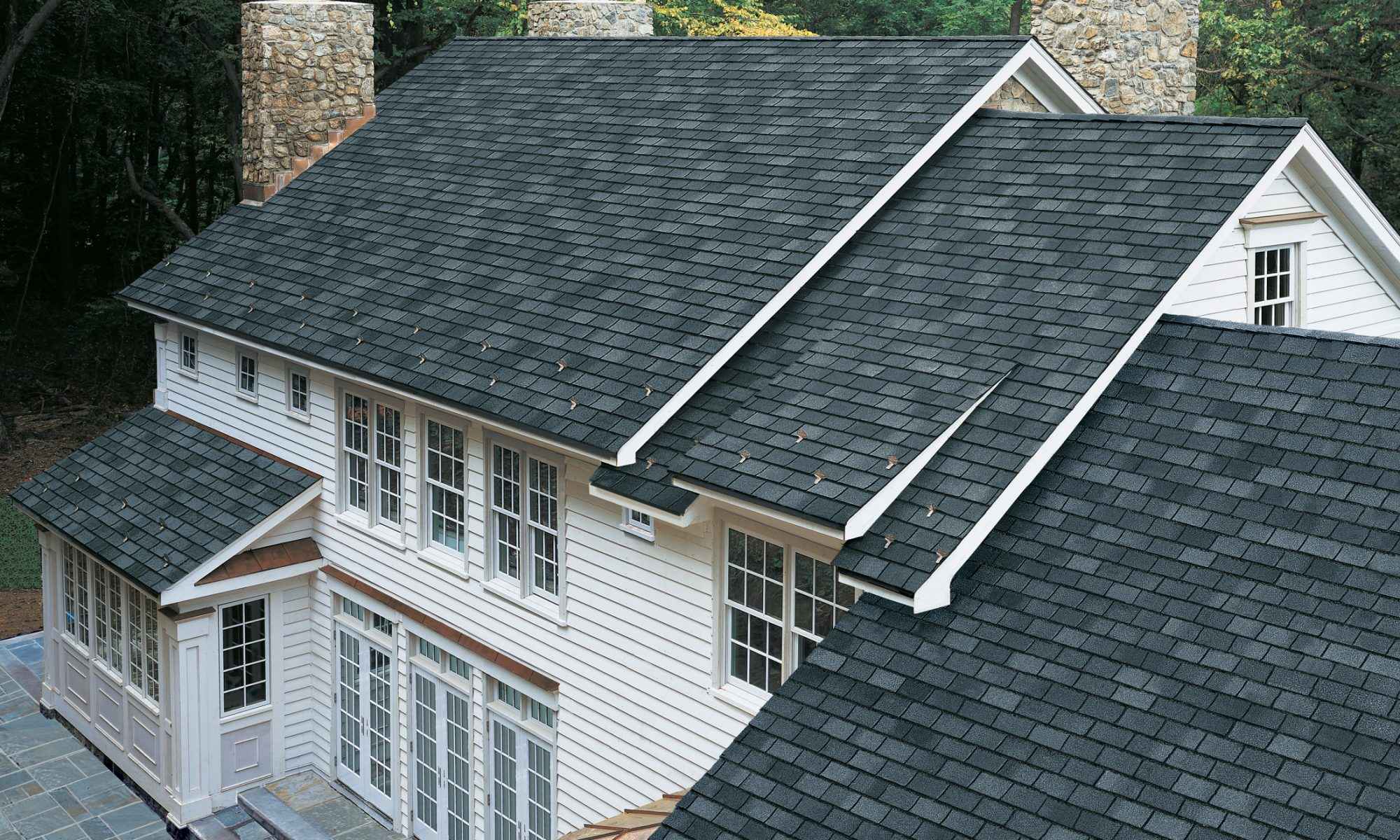A new roof does more than seal out weather. Because the roof can account for a third or more of your home’s curb view, its color influences style, comfort, and even resale value for decades. Dark or light shades change heat absorption.
Multi-tone blends can make a house feel taller, wider, warmer, or cooler. This guide shows you how to select an asphalt shingle color that fits your architecture, plays nicely with existing materials, and works in your climate.
What Gives Asphalt Shingles Their Color?
Architectural asphalt shingles are made from a fiberglass base that’s saturated with asphalt, then topped with mineral granules. Those granules are what you see: solid colors, speckled blends, and shadow lines that imitate wood shake or slate.
Many product lines now include stain-resistant granules and “cool color” options that reflect more sunlight than traditional dark tones.
Key Takeaways
- Solid shades feel crisp and modern.
- Blended colors add depth and hide dust or pollen better.
- Cool-color granules can help reduce heat gain in sunny regions.
Color, Climate, and Comfort: Light Vs. Dark in Plain English
All else equal, lighter roofs run cooler in strong sun and dark roofs run warmer. If you live in a hot or sunny area, consider light grays, weathered blends, or shingles marketed as “cool” colors. In colder climates, deeper hues can help snow melt faster and visually anchor the home. Whatever you choose, remember that attic ventilation and insulation play a big role in overall comfort too.
Start with the House: Match Color to Architecture
Let the style of the home point you toward a palette.
- Modern and Contemporary: charcoal, onyx, graphite, steel gray
- Craftsman or Bungalow: driftwood, weathered wood, warm browns and taupes
- Colonial and Traditional: estate gray, dark brown, classic black
- Mediterranean or Tuscan: sun-warmed browns, muted olives, terra tones
- Farmhouse and Transitional: soft black or deep charcoal for contrast, or light gray for a brighter take
Tip: When in doubt, look at real houses of the same style in your area and note which roof colors always look right.

Coordinate with Fixed Materials You are Not Changing
Your roof must complement the things that will stay:
- Brick and Stone: borrow a secondary tone from the mortar, flecks, or veining so the roof feels tied in, not competing
- Siding: busy siding wants a calmer roof; simple siding can handle more texture or contrast
- Trim and Windows: cool whites and black frames pair best with grays and charcoals; creamy trims suit browns and tans
- Site and Landscaping: wooded lots wear earth tones well; coastal and desert settings favor lighter, sun-friendly colors
How Pitch, Daylight, and Distance Change What You See
- Steeper roofs show more surface and more contrast.
- Low slopes make colors read darker and flatter.
- Morning vs. afternoon light can shift a blend from cool to warm.
- Street distance softens busy patterns. A shingle that looks loud in your hand can look perfect from the curb.
The 5-Step Method to Choose Your Roof Color
- Shortlist by Style: pick three or four colors that match your architecture and existing materials.
- Use a Visualizer: try colors on a photo of your home to compare contrast and undertones.
- Order Full-Size Samples: tape them to the siding and view morning, midday, and late afternoon.
- Check Climate Considerations: if summers are hot, put at least one lighter or “cool color” option on your list.
- Look Around Locally: drive neighborhoods with similar homes, and ask your roofer for addresses of recent installs.
HOA, Resale, and What is Actually in Stock
- HOA Rules: many communities limit color families. Confirm the approved range first.
- Resale: neutral grays, charcoals, and driftwood-style blends appeal to the widest audience.
- Availability: color names and blends can vary by region. Verify local stock with your contractor before you fall in love with a swatch.
Common Mistakes to Avoid
- Color Matching the Siding: matching creates a flat, washed-out look. Aim for pleasing contrast instead.
- Ignoring Undertones: cool gray siding next to a warm brown-gray shingle can look off. Align undertones.
- Choosing Under Fluorescent Lights: judge color at your home, outside, in real daylight.
- Forgetting Accessories: hip and ridge shingles, vents, and metal edges should coordinate with the main field color.
What Each Color Family Does Visually?
Charcoal and Black
Creates strong, clean lines and maximum contrast with light siding. Great for modern and traditional homes alike. Tends to run warmer in sun.
Mid And Light Grays
Flexible and easy to live with. These tones blend with most siding and stone and are consistently good for resale.
Browns, Tans, and Driftwood Blends
Natural and welcoming. These hues pair well with beige, greige, and stone, and hide dust and pollen well in wooded or rural settings.
Blue and Blue-Gray
Crisp and coastal or modern depending on the trim. Works beautifully with white and pale gray siding.
Green and Olive-Tone Blends
Quietly distinctive. Complements stone veneer, cream trim, and lush landscaping without shouting.
Rustic Reds and Terra Mixes
Warm and character-rich. Best with stucco and Mediterranean details. Use thoughtfully to avoid clashing with brick.

Quick Comparison: Roof Color Families at a Glance
| Color Family | Visual Effect | Best Pairings | Climate Consideration | Resale Friendliness |
| Charcoal/ Black | Bold silhouette, high contrast | White, light gray, red brick | Warmer surface in sun | High |
| Medium/ Light Gray | Calm, versatile | Most sidings, stone, brick | Balanced | Very High |
| Browns/ Driftwood | Natural, grounded | Beige, greige, stone, warm trim | Good in wooded, dusty areas | High |
| Blue / Blue-Gray | Clean, coastal or modern | White, pale gray, cedar accents | Cooler vibe | Medium (context matters) |
| Green / Olive | Earthy, distinctive | Stone, taupe, cream | Works well with heavy landscaping | Medium |
| Red / Terra | Warm, old-world | Stucco, clay tones | Strong personality | Low–Medium |
Final Checklist Before You Sign
- The color supports your home’s style and fixed materials
- You saw full-size samples on your house in different light
- Climate, comfort, and ventilation were considered
- HOA rules and local availability are confirmed
- Accessories and ridge caps match the plan
Wrap-up
A great roof color starts with architecture and ends with a sample on your wall in real daylight. Shortlist by style, test in the sun you actually live with, and choose a tone that supports both comfort and curb appeal. Do that, and you will be happy with your roof every time you pull into the driveway.
FAQs
Do dark shingles always mean a hot attic?
Not automatically. Roof temperature is influenced by color, but also by ventilation, insulation, and the specific granules used. A well-ventilated attic can narrow the comfort gap.
How do I know if a shingle is a “cool color”?
Manufacturers label lines with higher solar reflectance. If heat is a concern, ask for the cool-color options and compare them alongside your preferred shades.
What if my brick or stone has many colors already?
Pick a roof that echoes a minor color in the masonry or choose a calmer neutral that ties everything together.


